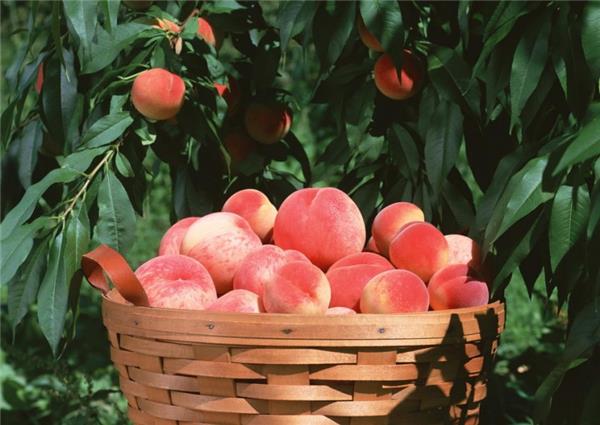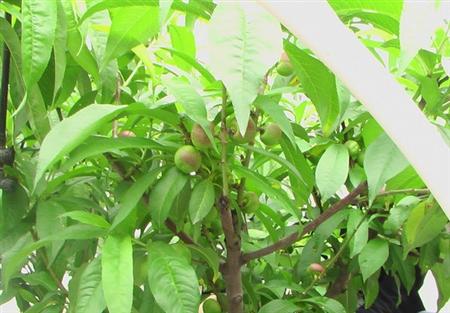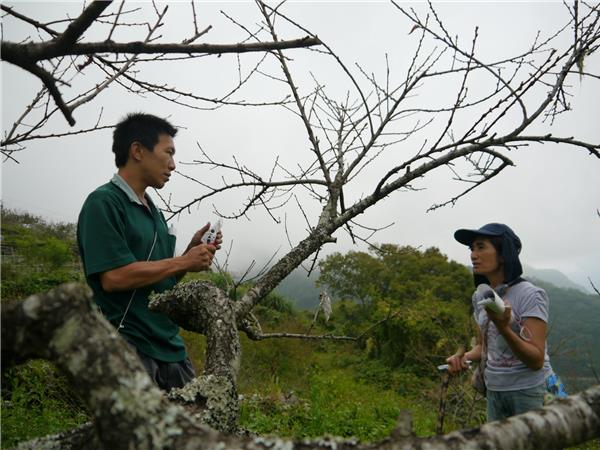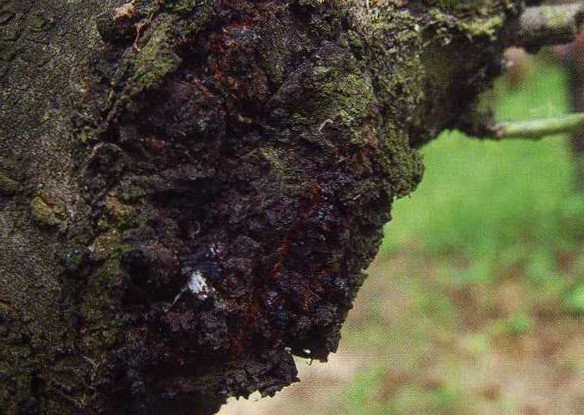Control methods of diseases and insect pests in peach trees
The common diseases of peach trees are bacterial rot, leaf blight, fruit blotch, fruit rot and swelling, pathogen invading trunk disease, root nodule disease and so on. If it is not found in time, it may cause peach trees to be destroyed by diseases and then spread to other peach trees, which may lead to extinction. The following is to introduce the treatment of peach tree diseases, prevention and control methods: first of all, in the choice of peach orchard, we should choose a place with high terrain, good drainage, sufficient sunshine and good soil to build an orchard. In the process of peach planting, it is necessary to increase the necessary nutrition and improve resistance, whether in summer pruning or winter pruning, the diseased branches should be completely removed. In addition, it is necessary to ask agricultural experts to spray the corresponding agents to treat the disease until the disease is cured. Peach plants are quite sensitive to pesticides, and some organophosphorus agents with strong permeability and absorption and omethoate are prone to drug damage, so they are not suitable to be used.

The common pests of peach trees are: sprouts, powerful insects that destroy buds, leaf eaters, leaf spot insects, fruit borer, juice sucking insects, poisonous insects and longicorn beetles all destroy fruits, leaves and branches. The main ways to treat insect pests are: when pruning, the parasitic places of pests should be completely removed, and the bald peach trees in winter can be checked to see if there is a pest parasitism. In addition, it is necessary to protect the natural enemies of these insect disasters to eliminate pests. Finally, the insect pests are completely eliminated by spraying pesticides when they breed in early spring.
Control methods of diseases and insect pests in peach trees
(1) perforation
Perforation is one of the main diseases of peach trees, which is common in peach producing areas and often causes damage in peach cultivation in solar greenhouse. Perforation diseases mainly include bacterial perforation disease, fungal mildew spot perforation disease and fungal brown spot perforation disease. if these three kinds of perforation diseases are not controlled in time, they will cause leaf perforation and even shoot death, thus seriously weakening the tree potential and reducing the yield and quality of fruit.

(2) Botrytis cinerea of peach
Botrytis cinerea is one of the most important diseases of nectarine cultivated in solar greenhouse.
1. Symptoms of damage: mainly harmful flowers and young fruits. In the early stage, the diseased flowers gradually softened and withered and rotted, and then there was a dense grayish-brown mildew layer on the calyx and receptacle, and finally, the diseased flowers fell off, or could not fall off smoothly and remained on the young fruit, causing the disease of the young fruit. Young fruit disease, began to produce light green round spots on the fruit surface, and then with the rapid expansion of the disease spot, the color gradually showed dark brown, the growth of light diseased fruit stagnated, the serious whole fruit rotted, and finally dried into a stiff fruit hanging on the branch.
(3) Peach brown rot
Peach brown rot, also known as Sclerotinia sclerotiorum and fruit rot, is an important fruit disease of peach trees.
1. Damage symptoms: mainly damage peach fruit, followed by flowers, leaves and new shoots. The fruit can be damaged from young fruit to mature fruit, but the closer it is to maturity, the more serious it is. Fruit disease, initially produce brown round spots on the fruit surface, if the conditions are suitable, the disease spot will spread to the whole fruit within a few days, the flesh will also become brown, soft rot, and finally produce gray-brown mold clumps on the surface of the disease spot, that is, the conidium of the pathogen. After the diseased fruit rotted, some fell off, and some lost water on the hanging branches of the shrunken fruit for a long time.

(4) Peach leaf shrinking disease
Peach leaf shrinking disease can infect peach, nectarine, almond and apricot, but not flat peach. When the disease is serious, the new shoots can not grow normally, or even wither, and the diseased fruits are deformed and early falling, which often cause great harm to nectarines cultivated in solar greenhouse.
1. Damage symptoms: mainly damage leaves, serious can also be harmful flowers, shoots and young fruit. In the early stage of the disease, the tender leaves showed red curl as soon as they were pulled out after budding. With the expansion of the leaves, the degree of shrinkage intensified, the leaves stretched unevenly, the mesophyll was thick and brittle, and showed a yellow-green or yellow-green and green mosaic. In the later stage of the disease, the leaves are reddish brown, and there is often a layer of gray-white wax powder on the surface (which is the ascus layer of the pathogen). When the air is moist in the greenhouse, the diseased leaves are scorched, wilted or rotten, often causing early defoliation. After the death of the top leaves of the branches, it can cause the lower axillary buds to germinate and draw out the secondary shoots. Although the new leaves are no longer damaged, the development of the branches is not full, and most of them form clustered leaves.
Harm and control methods of coal fouling disease in peach trees
Symptom
Peach coal pollution disease is mainly harmful to leaves, but also to branches or fruits. When the leaves are infected, the leaves show dirty brown round or irregular mildew spots at the beginning, and then form soot, which can be covered with leaves, branches and fruit faces. in serious cases, green leaves and delicious fruits can hardly be seen, and black mildew layers are everywhere; affect photosynthesis and cause early defoliation of peach trees.
Pathogen
There are many kinds of pathogens causing coal pollution, including Aureobasidium pullulans, multi-main Cladosporium (herbaceous Cladosporium) and Megaspora, all of which belong to semi-known subphylum fungi. The conidium is erect, brown or olive brown, single branch or slightly branched, the upper part is slightly curved, the terminal conidia is short chain, oval, with 1-3 septum, the size is 10-18 × 5-8 microns. Megasporidium hyphae spreading, conidium pedicel brown, clustered or single-branched, slightly curved, conidia elliptic, with 2 or more septum, light brown. In addition, Alternaria and Alternaria can cause peach coal fouling disease. The population combinations of coal fouling bacteria on peach trees were different in different areas, and most of the spores were unevenly distributed on the leaf surface.

Route of transmission and conditions of onset
The coal fouling bacteria passed the dormancy period with hyphae and conidia on diseased leaves or in soil and plant remains, and the next spring produced conidia, spread through wind and rain, aphids, shell insects, whitefly, etc., and it was easy to occur in peach orchard or plum rain season.
Prevention and cure method
The main results are as follows: (1) change the microclimate of Taoyuan to make it have good permeability and drain water in time after rain to prevent moisture retention.
(2) timely control of aphids, whitefly and scale insects.
These are some of the harm and prevention methods of peach coal pollution disease sorted out by Xiaobian. Have you learned it? The knowledge compiled by the editor should be studied well, so that the peach trees you plant can grow better and bring you a bumper harvest.
Pathogen
There are many kinds of pathogens causing coal pollution, including Aureobasidium pullulans, multi-main Cladosporium (herbaceous Cladosporium) and Megaspora, all of which belong to semi-known subphylum fungi. The conidium is erect, brown or olive brown, single branch or slightly branched, the upper part is slightly curved, the terminal conidia is short chain, oval, with 1-3 septum, the size is 10-18 × 5-8 microns. Megasporidium hyphae spreading, conidium pedicel brown, clustered or single-branched, slightly curved, conidia elliptic, with 2 or more septum, light brown. In addition, Alternaria and Alternaria can cause peach coal fouling disease. The population combinations of coal fouling bacteria on peach trees were different in different areas, and most of the spores were unevenly distributed on the leaf surface.

Route of transmission and conditions of onset
The coal fouling bacteria passed the dormancy period with hyphae and conidia on diseased leaves or in soil and plant remains, and the next spring produced conidia, spread through wind and rain, aphids, shell insects, whitefly, etc., and it was easy to occur in peach orchard or plum rain season.
Prevention and cure method
The main results are as follows: (1) change the microclimate of Taoyuan to make it have good permeability and drain water in time after rain to prevent moisture retention.
(2) timely control of aphids, whitefly and scale insects.
These are some of the harm and prevention methods of peach coal pollution disease sorted out by Xiaobian. Have you learned it? The knowledge compiled by the editor should be studied well, so that the peach trees you plant can grow better and bring you a bumper harvest.
Related
- Wuhan Hospital Iron Tree Blooming Result Was Instantly Frightened by the Gardener Master
- Which variety of camellia is the most fragrant and best? Which one do you like best?
- What is the small blue coat, the breeding methods and matters needing attention of the succulent plant
- Dormancy time and maintenance management of succulent plants during dormancy
- Minas succulent how to raise, Minas succulent plant pictures
- What are the varieties of winter succulent plants
- How to raise succulent plants in twelve rolls? let's take a look at some experience of breeding twelve rolls.
- Attention should be paid to water control for succulent plants during dormant period (winter and summer)
- Watering experience of twelve rolls of succulent plants
- Techniques for fertilizing succulent plants. An article will let you know how to fertilize succulent plants.



